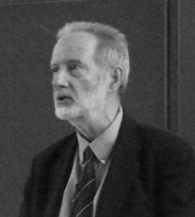The distinctive feature of modern science as an activity rather than as a body of knowledge is experimental modeling. Through experimentation modern science constructs models of different natural processes, and by means of arguments based an a principle of proportionality uses them to reason from known or observed cause-effect relationships to unknown causes of known effects. Galileo Galilei (1564—1642) was the pioneer of such modeling in physics (falling bodies), which has since been extended to chemistry (atomic models), biology (models of DNA), and even human psychology (computer modeling of cognitive proeesses).[7]
Modern scientific experimentation constructs models of what (it thinks) already exists, to expand knowing. The activity of design constructs models of what (it thinks) might be, to extend making. For science, models take in or receive and simplify complex phenomena, thereby disclosing order. For modern technology, or scientifically refined making and using in all their diversity, models project complex possibilities in realistic form, thus determining or enabling the control of power. When this projective modeling exhibits a conceptual break with the final result toward which it is pointed, a break to be bridged by analogy, it takes on its distinctly modern character.
Design models in engineering can, for instance, be “true” models, although more commonly they are merely “adequate” or even “distorted” and “dissimilar.” As one engineer has put it, “A distorted model is [one] in which some design condition is violated sufficiently to require correction of the prediction equation. Under certain conditions, particularly where flow of fluids is involved, it is impracticable, if not impossible, to satisfy all of the design conditions [under a common scale].”[8] Likewise, “dissimilar models are models which bear no apparent resemblance to the prototype but which, through suitable analogies, give accurate predictions of the behavior of the prototype.”[9] (This should probably be “sufficiently accurate.”) Another engineer distinguishes between models that are “totally direct,” “totally indirect,” “combination,” “visual,” and “competitive” with each being suited to test different aspects of a new idea.[10] All such models can be manifest in drawings, block diagrams, network schematics, mathematics, physical materials, and related systems of representation.[11 . See Middendort, William H. (1986), Design of Devices and Systems. New York: Dekker, pp. 156 ff. (Note, in passing, that the positive connotations of “schematic representation” build on while transforming the traditional negative implications of a “scheme.”)]
Receptive, scientific modeling embodies knowledge; with regard to knowledge, embodiment necessarily entails simplifying concepts. Projective, technological modeling disembodies action; with regard to action, disembodiment that leaves things out, idealizes them. The former materializes, the latter dematerializes. The paradoxical aim of projective, dematerialized or idealized modeling is not so much explanation as practical leverage or effectiveness. The present and its desires are cast with great force and power into the future. Because of the complexity of variables, theory alone cannot be used to deduce, for instance, the shape of an airfoil, or to determine the Optimum spatial arrangements of elements within a given structure. Engineers have to “figure out” such things by simulation, often employing a variety of models. So they construct a miniature, model airfoil and test it in a wind tunnel (now in a computer program); by means of such activities they are testing not some illustrated theory but a represented artifact.[12] For structures, engineers create scaled-down floor plans or two-dimensional facades in order to play with alternative arrangements of shapes by means of sketched geometries or manipulated cutouts. In each case the model or mock-up constitutes a temporary reduction to be eventually scaled up in the production not of knowledge but of objects. Design uses created microscale cause-effect relations rendered in models to engineer known or creatable macroscale causes into the production of desirable or desired macroscale effects.[13]
- [7] Key studies on the role of model construction in modern science can be found in: Hesse, Mary B. (1966), Models and Analogies in Science. Norte Dame, IN: University of Notre Dame Press; Harré, Rom (1970), The Principles of Scientific Thinking. Chicago, IL: University of Chicago Press; and Wallace, William (1984), The Intelligibility of Nature: A Neo-Aristotelian View. Review of Mataphysics, vol. 38, no. 1, whole no. 149 (September), pp. 33—56.
- [8] Murphy, Glenn (1950), Similitude in Engineering. New York: Ronald, p. 61.
- [9] loc. cit., pp. 61—62.
- [10] Glegg, Gordon L. (1981), The Development of Design. Cambridge: Cambridge University Press, pp. 44—45.
- [12] For more on this point, see Vincenti, Walter G. (1990), What Engineers Know and How They Know It: Analytical Studies from Aeronautical History. Baltimore, MD: Johns Hopkins University Press.
- [13] For an extended discussion of the dimensional problems engendered by such modeling, see Kline, Stephen J. (1965), Similitude and Approximation Theory. New York: McGraw-Hill.

